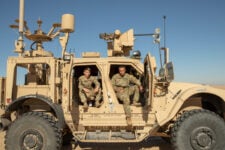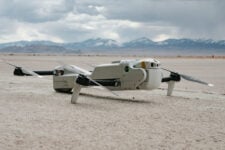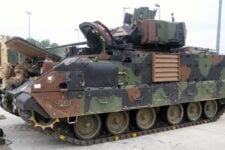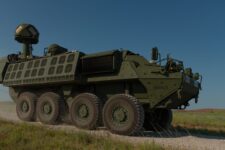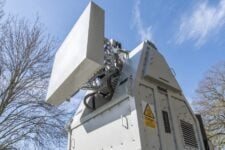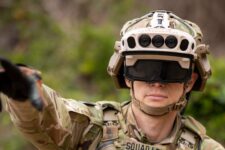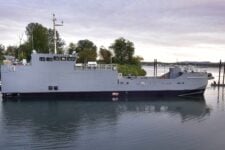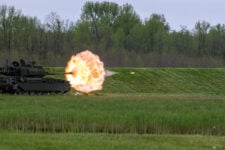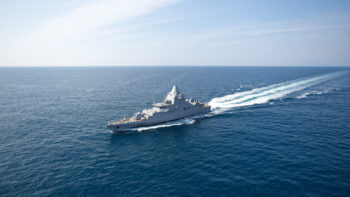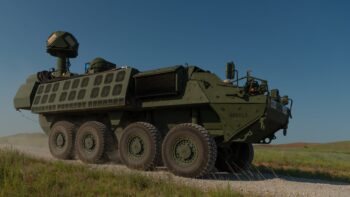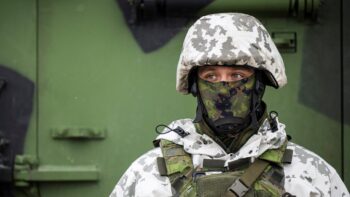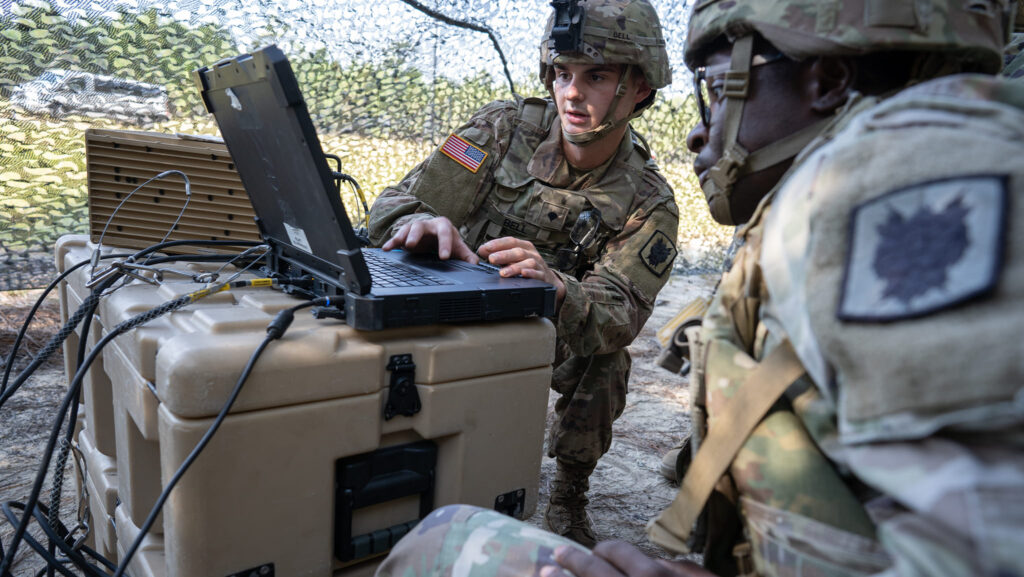
The Army intends to invest in new tactical terminals to leverage US, allied and commercial satellites in multiple orbits. (Photo: US Army)
WASHINGTON — The Army today released a new “vision” document foot-stomping the importance of the land service’s space operations and citing an “urgent need” for more funding for both new capabilities and trained personnel.
“The Army’s next fight will occur across multiple domains. Successful operations in and through the space domain will be critical to our success,” the Army Space Vision Supporting Multidomain Operations [PDF] states. “Commanders must understand that space capabilities start and end on the ground and be fully aware of their importance in planning and operations.”
In particular, the two-page document highlights the service’s concerns about the fact that in future fights, Army forces will be “operating under constant surveillance” from adversary space systems. Thus, the vision explains, the service “must invest in the knowledge and forces to counter threat space systems and enable our own space systems.”
To that end, the document says that the Army plans to “employ service-unique assets to interdict, or disrupt, adversary’s use of their space capabilities, ensuring Army forces gain and maintain the initiative to fight from positions of relative advantage in all domains.”
The Army said in a press statement today that the goal of the paper is to communicate “to Army commanders, staffs, and other stakeholders the need to create and exploit space domain effects that enable successful Army operations,” as well as “the urgent need to invest more in space capabilities and formations.”
“Integrating joint and Army space capabilities into the operations process must become second nature to commanders at every echelon,” said Chief of Staff of the Army Gen. Randy George in the statement. “We accomplish this by incorporating these capabilities into training, education, experiments and exercises.”
The vision document elaborates that the Army needs highly trained personnel empowered by the “right resources, kit, authorities and expertise to:
- “Integrate friendly, joint, coalition, and commercial space capabilities in support of all Army Warfighting Functions to include positioning, navigation and timing; deep sensing; beyond line-of-sight communications; force tracking; environmental monitoring; space domain awareness; and geospatial information.”
- “Interdict adversary space capabilities by delivering necessary fires and effects at echelon to protect friendly forces from observation and targeting by counter-space communications, counter-surveillance and reconnaissance, and navigation warfare operations.”
The vision document contains few specifics about exactly what new space capabilities the Army intends to pursue, beyond next-generation “tactical terminals to leverage multi-orbit satellite communications services and access space-enabled tactical intelligence, surveillance, and reconnaissance platforms to meet deep sensing requirements.”
While the Space Force is responsible for developing and operating Defense Department-owned satellite systems, the other services long have been responsible for developing their own terminals and receivers to utilize those on-orbit assets.
The ability to target enemy forces well beyond the line-of-sight is critical to the Army’s plans for Long Range Precision Fires systems to take the fight to the Chinese homeland, for instance, in any future war. The service in October released a new doctrine on intelligence across multiple domains, and began laying plans for modernizing its ISR platforms — with a key question being whether the service needs to directly tap into the ever-growing capabilities of commercial remote sensing satellites, or go through the Space Force and Intelligence Community to get that commercial data.
Indeed, for several years the Army has been negotiating with IC and the Space Force on the issue of how to ensure ISR data makes its way to ground operators in a timely manner.
Meanwhile, the Army has been working since 2018 on a series of experimental payloads for ISR, navigation and communications under its secretive Gunsmoke program, with the idea that they could be carried on Space Force, National Reconnaissance Office or commercial satellites. But the vision document does not mention those efforts or explain the role that service-specific space systems should play.

